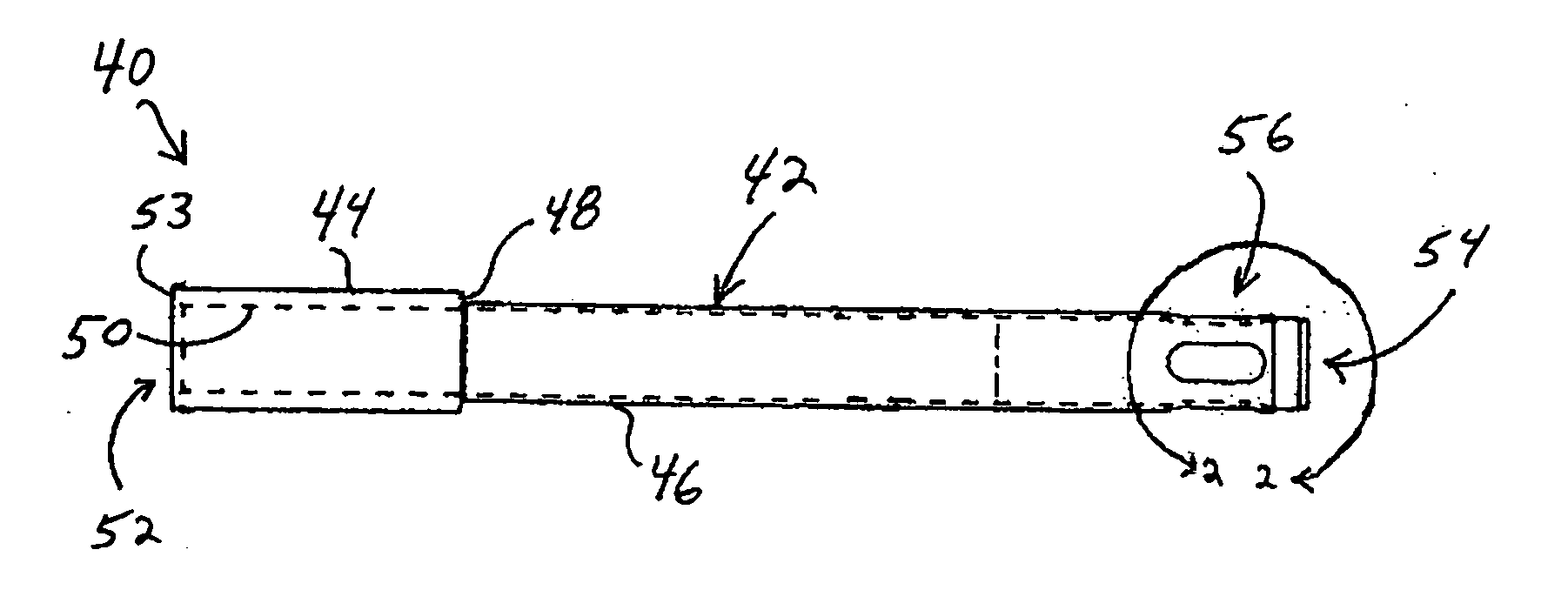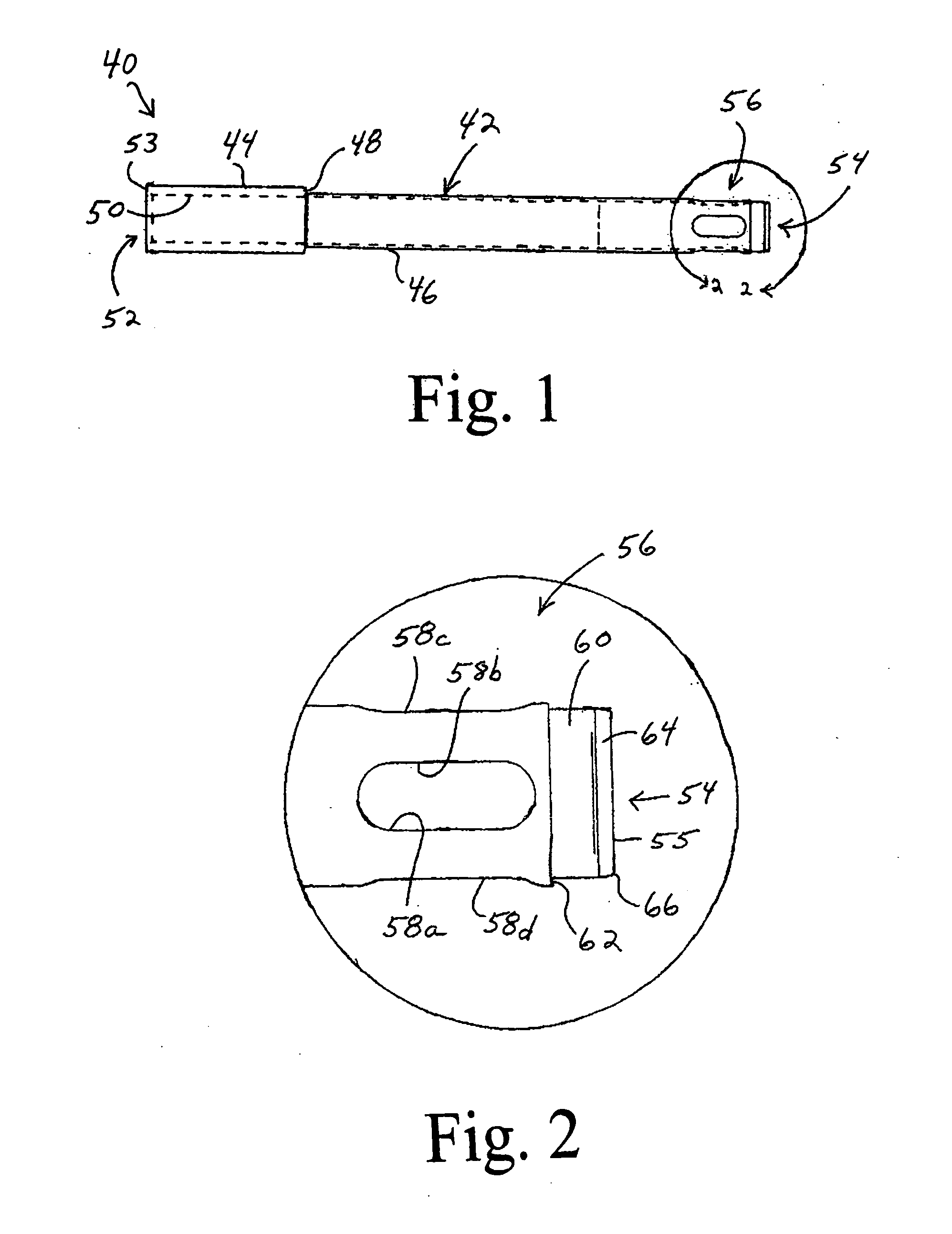Articular cartilage repair implant delivery device and method of use
a technology for articular cartilage and implants, which is applied in the field of articular cartilage repair implants delivery devices and methods of use, can solve the problems of limited spontaneous healing of damaged articular cartilage, increased risk of injury to cartilage, and articular cartilage tears
- Summary
- Abstract
- Description
- Claims
- Application Information
AI Technical Summary
Benefits of technology
Problems solved by technology
Method used
Image
Examples
Embodiment Construction
[0068] While the invention is susceptible to various modifications and alternative forms, specific embodiments thereof have been shown by way of example in the drawings and will herein be described in detail. It should be understood, however, that there is no intent to limit the invention to the particular forms disclosed, but on the contrary, the intention is to cover all modifications, equivalents and alternatives falling within the spirit and scope of the invention as defined by the appended claims.
[0069] Referring now to FIG. 1, there is depicted an exemplary embodiment of one form of a cannula or cannula construct, generally designated 40, fashioned in accordance with an aspect of the principles of the subject invention. While the cannula 40 is an instrument unto itself, the cannula 40 is one of a set of instruments or devices for performing a surgical procedure on articular cartilage, the other instruments of the set being shown in the other figures and described herein. Whil...
PUM
 Login to View More
Login to View More Abstract
Description
Claims
Application Information
 Login to View More
Login to View More - R&D
- Intellectual Property
- Life Sciences
- Materials
- Tech Scout
- Unparalleled Data Quality
- Higher Quality Content
- 60% Fewer Hallucinations
Browse by: Latest US Patents, China's latest patents, Technical Efficacy Thesaurus, Application Domain, Technology Topic, Popular Technical Reports.
© 2025 PatSnap. All rights reserved.Legal|Privacy policy|Modern Slavery Act Transparency Statement|Sitemap|About US| Contact US: help@patsnap.com



